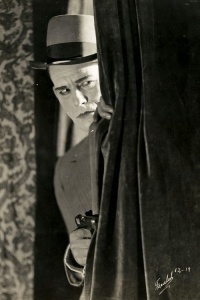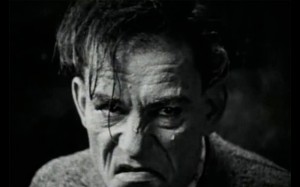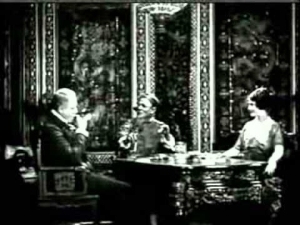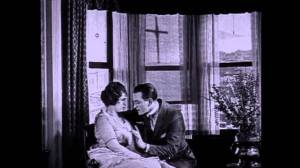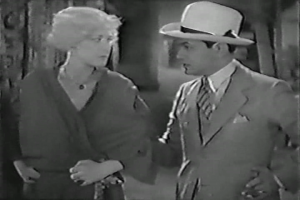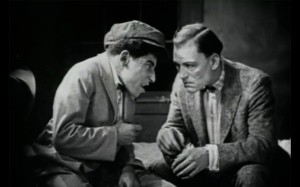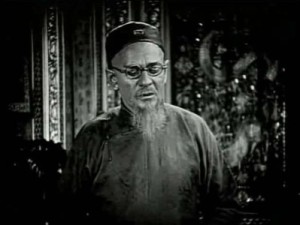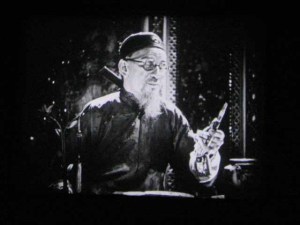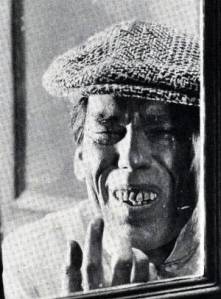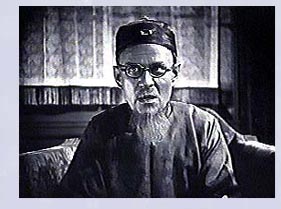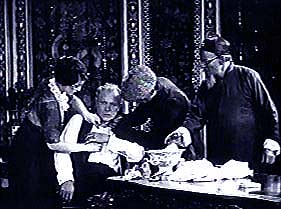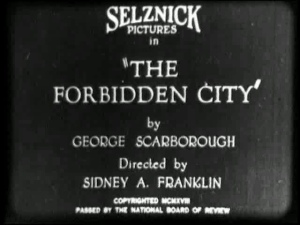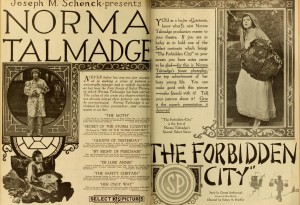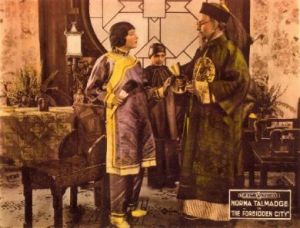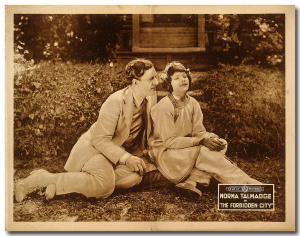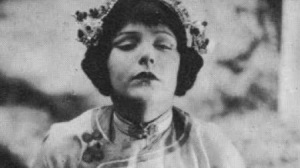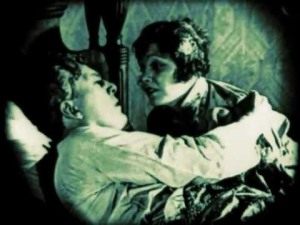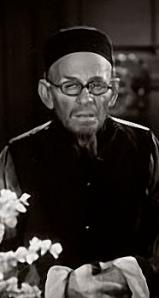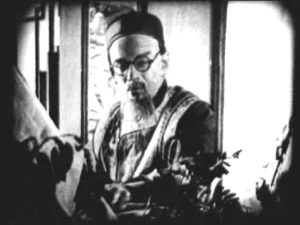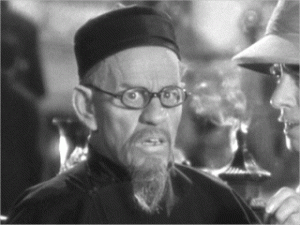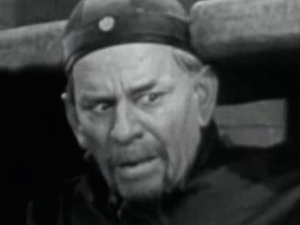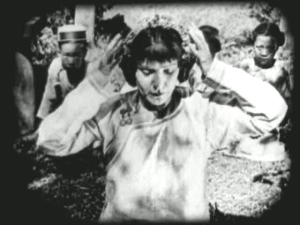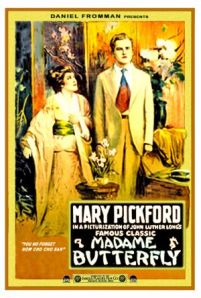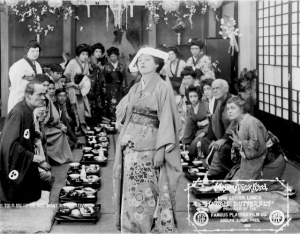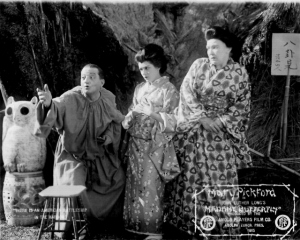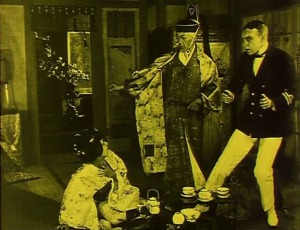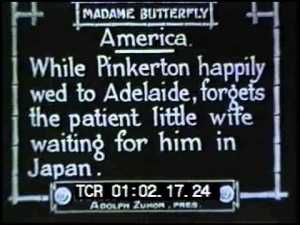Outside The Law (1920)
Lon Chaney was one of the true stars of the early movie era and is still renowned today as The Man Of A 1000 Faces (including one or two yellow ones). Famed for his ground-breaking use of prosthetics and makeup he specialised in portraying “tortured, often grotesque and afflicted characters” (Wiki) and is best known for starring roles in silent horror films such as The Hunchback Of Notre Dame and Phantom Of The Opera. Chaney was also no stranger to struggle. Despite his obvious character acting flair he was reportedly told by a studio head that he would never be worth more than $100 a week. It’s fair to say actors were treated appallingly in Chaney’s day and were it not for the bravery of some (including Boris Karloff) risking their entire careers to form a union they would be treated (even more) appallingly today (than they already are). The current trend for certain actors not to want to get involved in activism of any kind smacks of the self-defeating selfishness of our age I’m afraid to say.
But I digress. In this workaday gangster morality tale directed by Tod Browning, Chaney is (relatively unusually in a movie) given two roles, the fearsome and feral gangster Black Mike Sylva (not named so because he’s black I hasten to add) and Chinese manservant Ah Wing. In the first Chaney is at his very best, dominating the screen with a garish energy only matched by James Cagney (who was later to play Chaney in a biopic). In the second he’s an absolute embarrassment, but more of that later. The plot revolves around Silent Madden, a criminal leader in San Francisco, and his gangster daughter Molly (played by popular actress of the day, Priscilla Dean) having forsaken a life of crime after receiving counsel from Chang Low, a Confucian philosopher living in Chinatown. The “despicable” (Wiki) Black Mike Sylva frames Molly’s father for murder, causing Molly to lose faith in abiding by the law and prompting her return to a life of crime. Black Mike plots to double-cross Molly as well during a jewelry theft, but Molly gets word from her gangster lover and foils Black Mike’s plans. While hiding out from the law, Molly’s hard heart is slowly melted by her gangster lover. The film ends with a climactic shootout.
The film is unusual for the time in that the Chinese characters are portrayed as good guys, albeit portrayed wholely inappropriately.
Yellowface watch
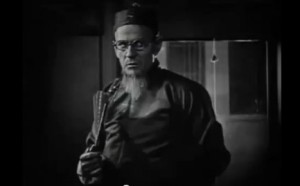 The perennially yellowface E. Alyn Warren
The perennially yellowface E. Alyn Warren
The film features two yellowface regulars, E. Alyn Warren (The Forbidden City, The Hatchet Man) and Chaney (Mr. Wu) as the Confucian sage Chang Low and his manservant Ah Wing. As Chang Low, Warren sports the same facial hair as he did in The Forbidden City where I remarked in my review on his resemblance to Sigmund Freud. In his darker and less ostentatious robes here he puts one to mind of a Jewish rabbi. He’s relatively restrained in this yellowface outing, though his serene and knowing smiles are his only deviations from complete inscrutability.
As Ah Wing Chaney grotesques as only he knows how but when the subject of that grotesquerie is racial characteristics it’s difficult not to feel uncomfortable watching as he gurns and mugs his way through an awful simpleton stereotype of a charaterisation. One reviewer of the time described Chaney’s Ah Wing as “incredibly subtle” but watching The Great Man’s initial close-up, all false teeth and taped eyelids grinning and gurning like a loon, you have to wonder what particular drugs this viewer had imbibed to be of that opinion.
The film is also notable for an uncredited appearance from a very young looking Anna May Wong as one of a group of (genuinely East Asian) girls being mentored by Chang Low.
Favourite scene? The one where Chang Low persuades the police chief that if Molly and her lover return the stolen diamonds of their own free will he should let them go. If only we all had a friendly neighbourhood yellowface man to cut us deals like that, eh readers?
Tomorrow we jump forward to 1985 to review little-remembered Remo James featuring a spectacular yellowface turn from Joel Grey. In the meantime there are just FOUR PERFORMANCES remaining of “boisterous romp through the yellowface canon” (Madam Miaow Says) The Fu Manchu Complex (at the moment with a different guest star every night!) BOOK TICKETS NOW http://www.ovalhouse.com/whatson/detail/the-fu-manchu-complex


